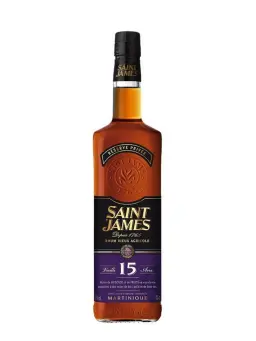
The very first recorded instance of cane brandy distillation in Martinique dates back to the 17th century, more precisely in 1639, when Mr. Faguet received authorization from the Compagnie des Îles d’Amérique to distill. In the past, rum was known as Tafia, guildive, or even tue-diable.
In this article, we set out to explore 5 must-visit rum distilleries in Martinique.
The origins of Martinique rum
In 1640, the very first permanent sugar estate appeared in Martinique. This development paved the way for the creation of numerous other sugar estates in the years that followed. By 1670, there were 117 sugar estates on the island, and a century later, in 1767, their number had grown to 450.
In 1694, Jean-Baptiste Labat, a Dominican missionary priest, made his first voyage to Martinique, bringing with him extensive distillation expertise. Thanks to him, the rum distillation process advanced significantly, notably with the introduction of Charentais pot stills.
Distillation techniques evolved again in 1808, when Frenchman Jean-Baptiste Cellier-Blumenthal developed the first vertical column still. The earliest models were installed in Martinique in 1818, and from 1840 onwards, single-column stills began to develop and gain popularity.
It was also during the 19th century that rum production in Martinique underwent a decisive shift, marked by the introduction of fresh sugarcane juice rums.
This transformation was largely driven by the growing competition from beet sugar, introduced in Europe at the end of the 18th century. Cultivated mainly in France and Germany, sugar beet offered a cheaper, locally produced alternative to imported cane sugar from the colonies, which had a major impact on sugarcane producers in the Caribbean.

Portrait of Jean-Baptiste Labat (©André Bouys and C. Mathey)
Faced with this competition, Martinican producers had to diversify to survive. With no commercial prospects for sugar, they turned their focus to rum, producing it directly from fresh cane juice without processing it into sugar.
The centralization of sugar production in Martinique also played a crucial role. Smaller plantations, unable to compete with large centralized mills, shifted toward producing rhum agricole from fresh cane juice.
This higher-quality production allowed them to position themselves in a niche market, catering to the growing demand for authentic, locally crafted products.
Up until then, the development and production of rum in Martinique had been thriving. But on April 23, 1902, the Montagne Pelée volcano erupted, devastating much of the northern part of the island.
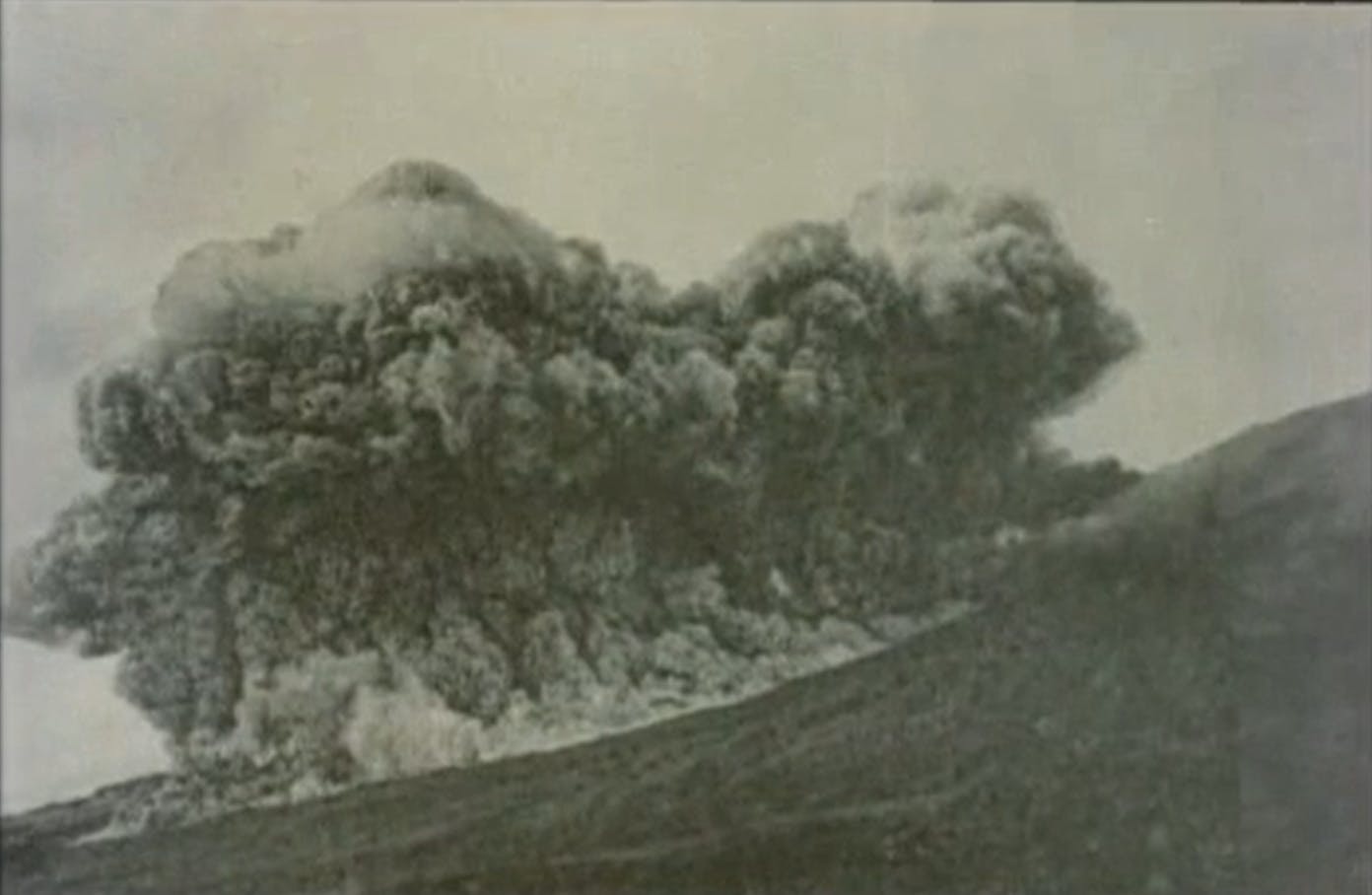
The city of Saint-Pierre is wiped off the map. Most factories and distilleries are destroyed or shut down, leading to the loss of thousands of jobs.
Following this, the Martinican rum industry slowly rebuilds and experiences soaring popularity during World War I, but is eventually replaced by whisky during World War II.
Little by little, rum’s popularity declines in favor of whisky. The price of rum drops until it reaches its lowest point in 1972. The global population loses all interest in rum until the 1990s.
In 1996, Martinique’s agricole rum is granted the AOC (Appellation d’Origine Contrôlée) label, marking a major turning point. To obtain it, producers had to comply with strict standards regarding selection, processing, and more. For instance, to be certified, fermentation must not exceed 72 hours, and the rum must be stored in stainless steel tanks for three months before bottling.
5 Martinique rum distilleries you should know about
Neisson Distillery
The story of Neisson Distillery begins in 1932, when a decree from the Governor of the Colonies officially authorizes the creation of the small Carbet distillery on the lands of La Thieubert, founded by the Neisson brothers.
It is the only one among the many small family distilleries established in the North Caribbean, a region far from the large factories and the birthplace of agricole rum, to have survived to this day.
Adrien planted the first sugarcane on the La Thieubert estate and built the first stone building using rocks from the riverbed. His younger brother, Hildevert-Pamphile, nicknamed Jean, left for Paris to earn his chemical engineering degree while the first building was being constructed.
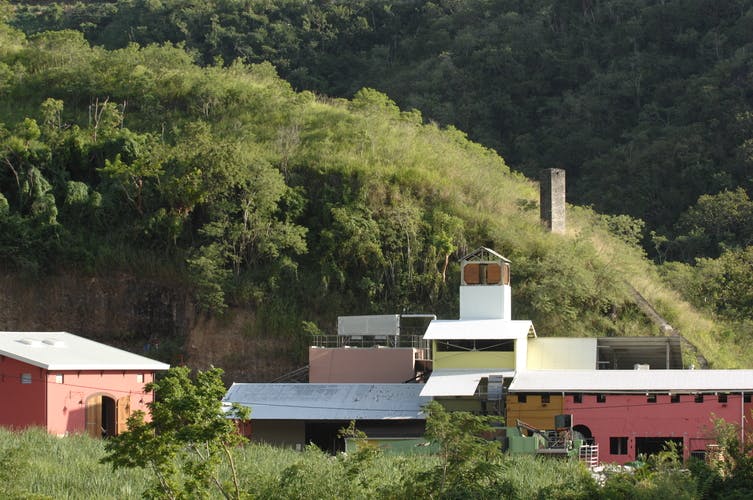
The first Babcock boiler, dating back to 1880, was purchased second-hand, as was the first Mariolle Fives-Lille mill in 1927.
Jean dedicated himself to improving the fermentation and distillation process, modifying the trays of the copper Savalle column to extract the most subtle aromas. He is also the creator of the iconic “Zepol’Karé” bottle.
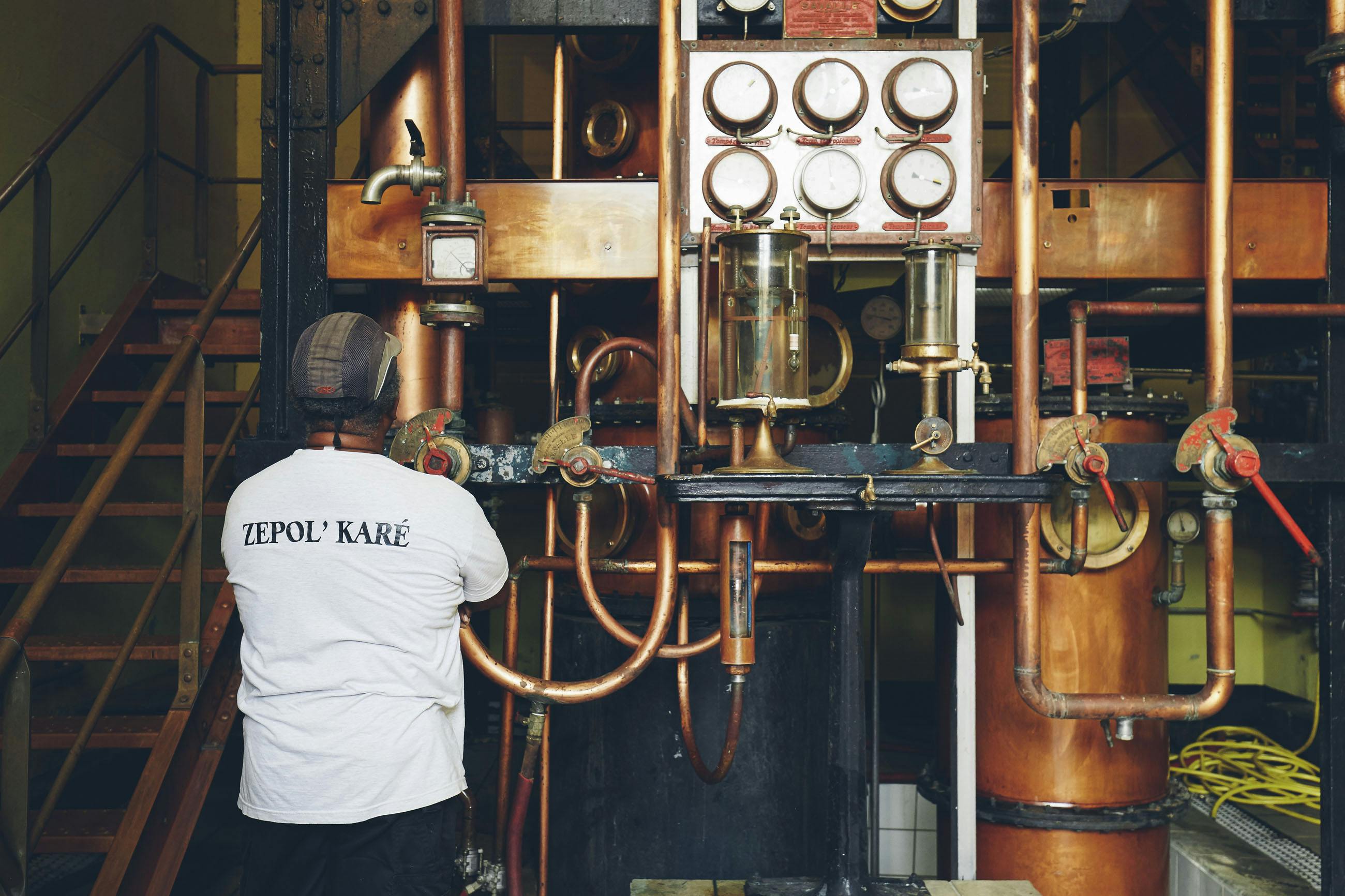
From the very beginning, Jean constantly sought to innovate and excel, focusing particularly on the quality of white rum rather than on yield.
He was the first to use stainless steel fermentation tanks, to recommend moderate crushing, long fermentations, and selective blending from parcel-based harvests, in order to preserve Neisson’s unique flavor.
He was also a pioneer in environmental preservation, introducing, for example, a bottle deposit system.
In 1997, Neisson white rum 55% became the first to win a gold medal at the Concours Général de l’Agriculture under the Martinique Appellation d’Origine Contrôlée.
In 2002, for the distillery’s 70th anniversary, the first 70% column-strength rum, L’Esprit, was launched, marking the start of a continuing success story.
A trailblazer in both terroir expression and environmental protection, Neisson produced the first organic AOC rum in 2016.
At the head of the distillery, Grégory Vernant carries on the family legacy with a constant drive for improvement, following in the footsteps of his predecessors. His experimental approach is reflected in the exploration of cask toasting profiles, which led to the creation of the Profil range.
In 2018, Neisson became the first company in Martinique and the first distillery in the French Overseas Territories to receive the prestigious Entreprise du Patrimoine Vivant state label, recognizing its exceptional craftsmanship.
Discover a must-try rum from Neisson Distillery.
NEISSON Profil 62
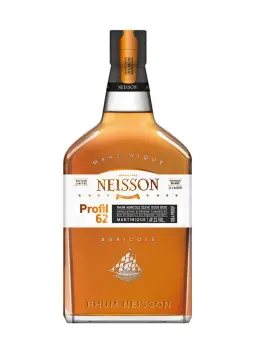
69.5 €
Neisson Profil 62
When first discovering this new Profil 62 from the Carbet distillery, the word that instantly comes to mind is harmony.
First, in terms of color, where shades of yellow and green create a radiant gradient of brightness. Then, on the aromatic and flavor profile, where floral, fruity, spicy, honeyed, exotic, and even medicinal notes unfold with remarkable serenity.
Saint James Distillery
In 1765, Reverend Father Edmond Lefébure decided to build a rum distillery on the heights of Saint-Pierre. On the Trou-Vaillant sugar estate, he began producing a sugarcane tafia, known at the time as guildive.
Rather than naming his rum after Trou-Vaillant, Father Lefébure chose Saint-James, after an English admiral who had lived in Saint-Pierre. The name was also a way to market the rum more easily to New England colonists.
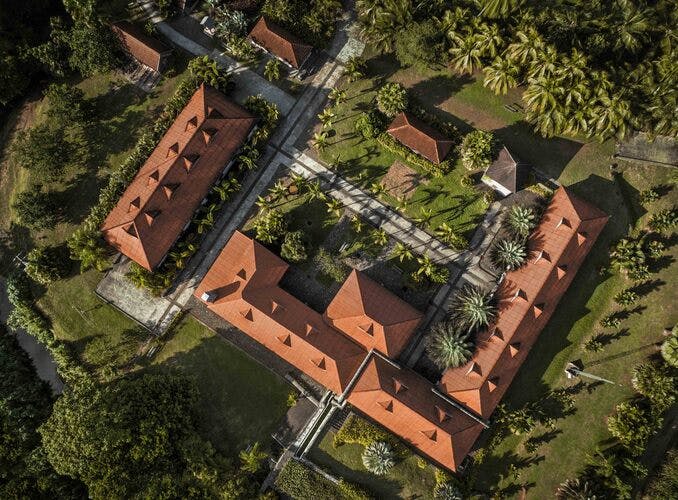
At that time, the import of rum into mainland France was prohibited so as not to compete with metropolitan brandies. The Saint-James name was easily recognizable to the English, which helped facilitate sales to New England colonists.
More than a century later, in 1890, Paulin Lambert, a merchant from Marseille, took great interest in Martinican rum production and purchased several estates, including Trou-Vaillant, after registering the “Saint-James” trademark.
In 1902, Mount Pelée erupted, wiping out much of northern Martinique. The plantations around Saint-Pierre were destroyed. The Saint-James distillery was partially spared and resumed rum production as early as 1905.
During World War I, the Saint-James distillery took advantage of the context to increase its rum production, which was used for gunpowder manufacturing, disinfectant production, and soldiers’ consumption.
After a period of severe financial hardship, the French company Cointreau acquired Saint-James rums in 1973 and relocated production to Sainte-Marie, on the Atlantic coast in the north of the island.
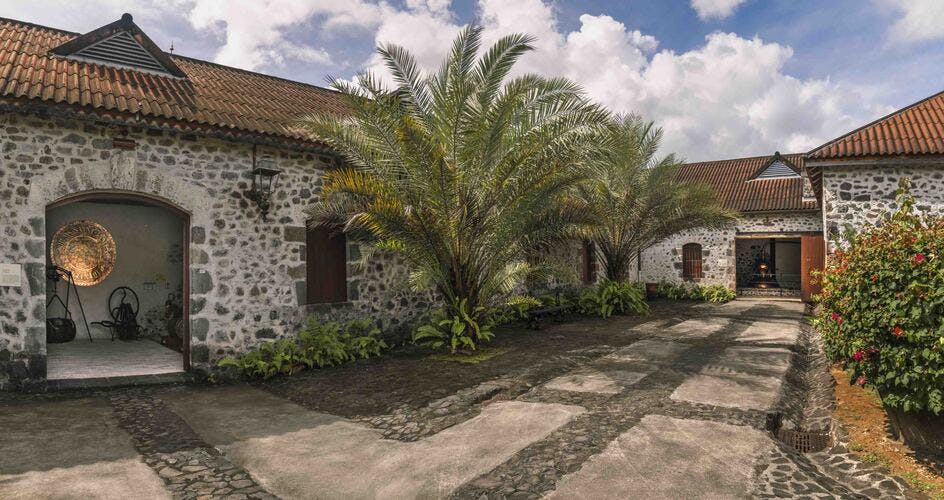
The company experienced a revival, propelling its rums onto the international stage, and by 1996, Saint-James played an active role in creating the “A.O.C Martinique”, highlighting the unique character of Martinican agricole rum.
Discover a must-try rum from Saint James Distillery.
Saint James 15 ans
Aged for 15 years in the tropical climate of Sainte-Marie, this Martinican agricole rum is a true classic from Maison Saint James. It is an exceptional sipping rum, delivering intense and powerful aromas. Its complex notes of ripe fruits, precious woods, and subtle spices will delight even the most discerning connoisseurs, making each tasting a unique and memorable sensory experience.
Depaz Distillery
The Depaz Distillery traces its origins to Habitation La Montagne, an agricultural estate founded in 1651 by Jacques Duparquet, the first governor of Martinique.
Originally, the estate was dedicated to the cultivation of tobacco, indigo, and livestock farming. However, the cultivation of sugarcane quickly expanded thanks to advances in distillation techniques.
Several families, including that of Victor Depaz, played a key role in the growth of rum production in Martinique, contributing to the rise of Saint-Pierre, which became the world’s leading rum-exporting port.
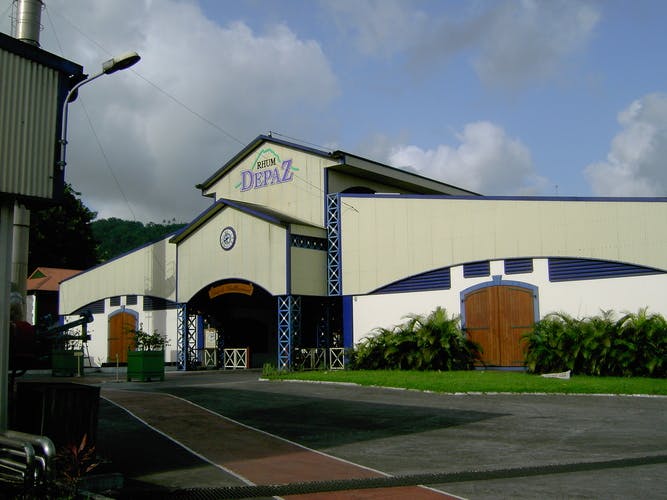
The rum casks are shipped to Europe, where the amber liquid generates considerable enthusiasm. At its peak, Saint-Pierre earns the nickname “the Little Paris of the Antilles.”
However, on May 8, 1902, the eruption of Mount Pelée wipes out the city of Saint-Pierre, marking a turning point in the region’s history.
Victor Depaz, then a student in Bordeaux, learns of the loss of his entire family. Orphaned and ruined, he considers moving to Canada. During a stopover in Martinique, he decides to return to Saint-Pierre, to Habitation Périnelle, the place of his childhood.
On May 8, 1917, exactly 15 years after the eruption, Victor Depaz inaugurates his brand-new distillery, supplied by the 521 hectares of sugarcane he now owns on the slopes of Mount Pelée.
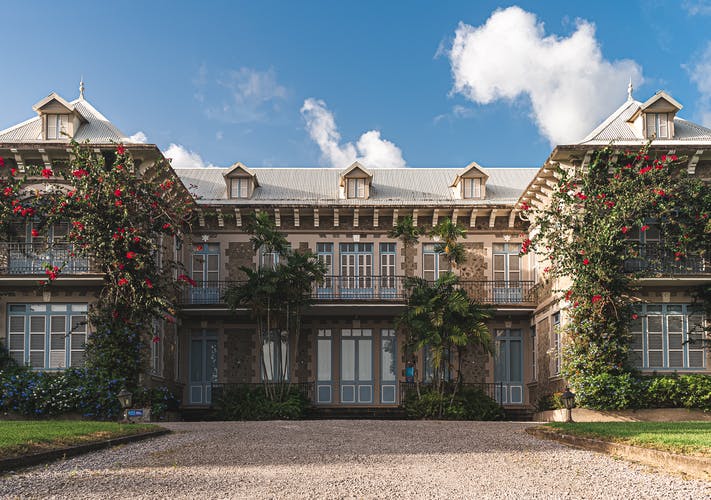
He also built a family residence, a replica of Habitation Périnelle, named Château Depaz, where he settled in 1922 with his wife and their eleven children.
In the 1950s, Victor Depaz’s sons, André and Raoul, took over. They modernized sugarcane production and improved the distillery, now known as the Depaz Distillery.
Discover a must-try rum from Depaz Distillery.
DEPAZ VSOP
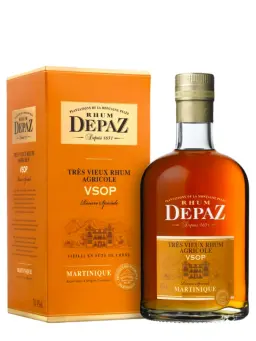
56.9 €
Depaz VSOP
Depaz Réserve Spéciale VSOP is a distinctive blend of rums aged in carefully selected oak casks. On tasting, it reveals remarkable roundness and exceptional length on the palate.
A1710 Distillery
The A1710 distillery originates from Jean Assier, ancestor of the current owners, who arrived in Martinique in 1710.
In 2006, Yves Assier de Pompignan embarked on the project of creating a new rum distillery. With the acquisition of Habitation du Simon, he decided to launch the project in 2010. A aging cellar was then established, equipped with casks previously used for cognac, along with a laboratory at Habitation du Simon.
After a lengthy administrative process, the distillery opening permit was finally obtained on December 31, 2015. It became the first distillery dedicated to producing agricole rum to be established in Martinique in decades.

Work on the rum distillery began in an 18th-century sugar purging house, located in the heart of the estate.
After ten years of hard work, the A1710 Distillery was inaugurated at Habitation du Simon.
In 2023, the A1710 team took on a new challenge: commissioning a second still. Almost identical to the first installed in 2015, this copper still was custom-designed and assembled on-site.
Like La Belle Aline, the distillery’s first still, Douce Alice combines a Charentais pot still with a Creole column, a rare technical choice among French Caribbean rum distilleries, where the distillation column remains the norm.
Habitation Saint-Etienne – Distillerie du Simon
Habitation Saint-Etienne (HSE) produces its rums across two sites. Distillation takes place at the Distillerie du Simon, while the other stages of production are carried out directly at the Saint-Etienne estate.
Habitation Saint-Etienne was founded in the 19th century, more precisely in 1863, in the heart of Martinique, an island in the French West Indies. Originally, the estate was a sugarcane plantation, like many others on the island at that time, spanning over 400 hectares.
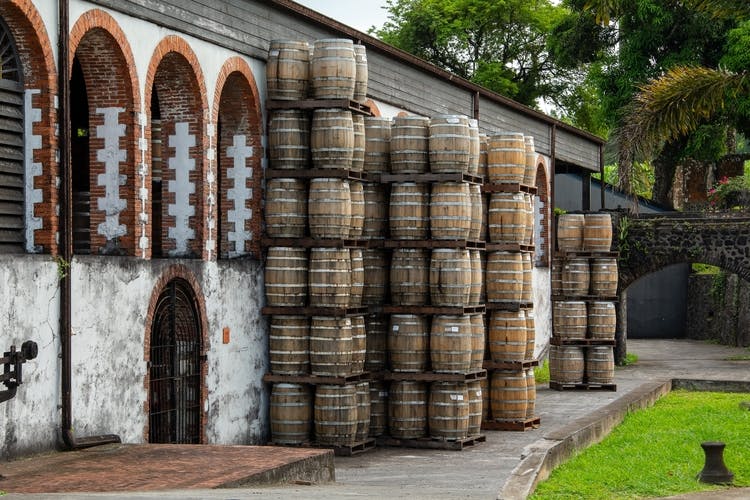
In 1882, the plantation was acquired by Amédée Aubéry, a wealthy industrialist. He modernized the operation and installed a distillery to transform sugarcane into rhum agricole, a high-quality spirit obtained by the direct distillation of sugarcane juice, also known as "vesou."
Under the management of the Simonnet family, who took over in 1909, Habitation Saint-Etienne experienced a period of prosperity. The distillery was modernized, and rhum agricole production became the core of its activity.
In the 1990s, the distillery saw a revival thanks to the recognition of the AOC (Appellation d'Origine Contrôlée) Martinique Rhum Agricole.
TO DISCOVER RUM FURTHER
La Maison du Whisky has three boutiques in Paris:
In each of these boutiques, you'll find a wide selection of whiskies, rums, sakes, and other fine spirits.
Follow our tasting calendar for upcoming events, or visit the Golden Promise Whisky Bar, which offers an extensive selection of whiskies and other spirits by the glass.
You can also discover the best rum based cocktails.
